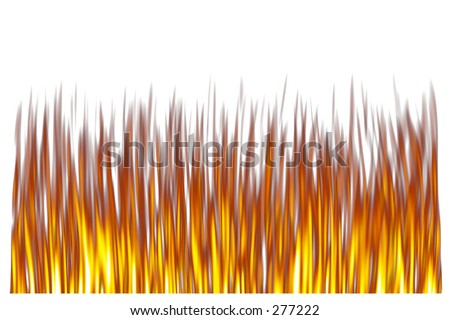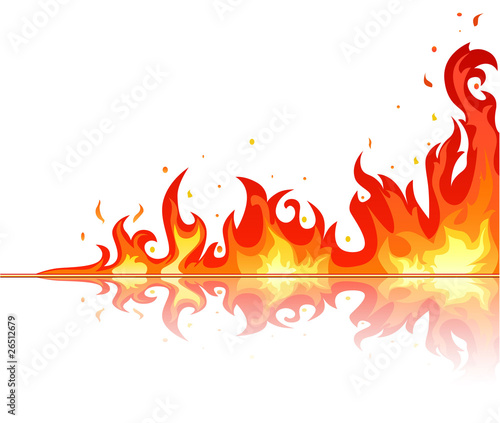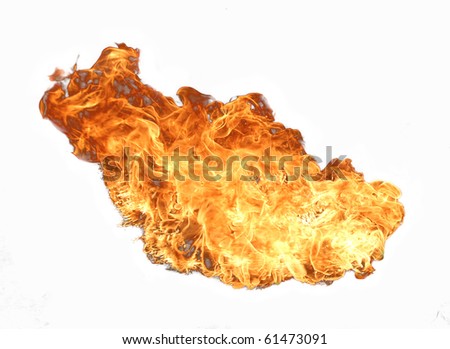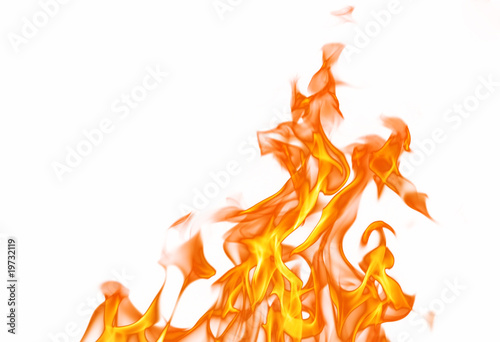The team was founded in 1972 in Atlanta, Georgia as the Atlanta Flames until moving to Calgary in 1980. The Flames played their first three seasons in Calgary at the Stampede Corral before moving into their current home arena, the Scotiabank Saddledome (originally known as the Olympic Saddledome), in 1983. In 1985–86, the Flames became the first Calgary team since the 1923–24 Tigers to compete for the Stanley Cup. In 1988–89, the Flames won their first and only championship. The Flames' unexpected run to the 2004 Stanley Cup Finals gave rise to the Red Mile, and in 2011 hosted and won the second Heritage Classic outdoor game.
Off the ice, the Flames own a Western Hockey League franchise (the Calgary Hitmen) and a National Lacrosse League franchise (the Calgary Roughnecks). They also lend their name to a bar and entertainment centre called Flames Central on Stephen Avenue in Downtown Calgary. Through the Flames Foundation, the team has donated over $32 million to charity throughout southern Alberta since the franchise arrived.
The Flames were the result of the NHL's first pre-emptive strike against the upstart World Hockey Association (WHA). In December 1971, the NHL hastily granted a team to Long Island—the New York Islanders—to keep the WHA's New York Raiders out of the brand new Nassau Veterans Memorial Coliseum. Needing another team to balance the schedule, the NHL awarded a team to an Atlanta-based group that owned the National Basketball Association's Atlanta Hawks, headed by prominent local real estate developer Tom Cousins. Cousins named the team the "Flames" after the fire resulting from the March to the Sea in the American Civil War by General William Tecumseh Sherman, in which Atlanta was nearly destroyed. They played home games in the Omni Coliseum in downtown Atlanta.
The Flames were relatively successful early on. Under head coaches Bernie "Boom Boom" Geoffrion, Fred Creighton and Al MacNeil, the Flames made the playoffs in six of eight seasons in Atlanta. In marked contrast, their expansion cousins, the Islanders, won only 31 games during their first two years in the league combined. This relative success did not carry over to the playoffs, however, as the Flames won only two post-season games during their time in Atlanta.
Despite the on-ice success, the Atlanta ownership was never on sound financial footing. Longtime general manager Cliff Fletcher said years later that Cousins' initial financial projections for an NHL team did not account for the WHA entering the picture. The Flames were also a poor draw, and never signed a major television contract.
In 1980, Cousins was in considerable financial difficulty and was forced to sell the Flames to stave off bankruptcy. With few serious offers from local groups, he was very receptive to an offer from a group of Calgary businessmen fronted by Canadian entrepreneur (and former Oilers owner) Nelson Skalbania. A last-ditch effort to keep the team in Atlanta fell short, and Cousins sold the team to Skalbania for US$16 million, a record sale price for an NHL team at the time. On May 21, 1980, Skalbania announced that the team would move to Calgary. He chose to retain the Flames name, feeling it would be a good fit for an oil town like Calgary, while the flaming "A" logo was replaced by a flaming "C". Skalbania sold his interest in 1981, and the Flames have been locally owned since.
Unlike the WHA's Calgary Cowboys, who folded three years earlier, the Flames were immediately embraced by the city of Calgary. While the Cowboys could manage to sell only 2,000 season tickets in their final campaign of 1976–77, the Flames sold 10,000 full- and half-season ticket packages in the 7,000 seat Stampede Corral. Led by Kent Nilsson's 49-goal, 131-point season, the Flames qualified for the playoffs in their first season in Calgary with a 39–27–14 record, good for third in the Patrick Division. The team found much greater playoff success in Calgary than it did in Atlanta, winning their first two playoff series over the Chicago Black Hawks and Philadelphia Flyers before bowing out to the Minnesota North Stars in the semi-finals. This early success was not soon repeated. After a losing record in 1981–82, Fletcher jettisoned several holdovers from the Atlanta days who could not adjust to the higher-pressure hockey environment and rebuilt the roster. Over the next three seasons, he put together a core of players that would remain together through the early 1990s. Fletcher's efforts to match the Oilers led him to draw talent from areas previously neglected by the NHL. The Flames were among the earliest teams to sign large numbers of U.S. college players, including Joel Otto, Gary Suter, and Colin Patterson. Fletcher also stepped up the search for European hockey talent, acquiring Hakan Loob and other key players. He was among the first to draft players from the Soviet Union, including HC CSKA Moscow star Sergei Makarov in 1983, but Soviet players were not released to Western teams until 1989. Still, the team was sufficiently improved to challenge the Oilers, who required the maximum seven games to defeat the Flames en route to their 1984 Stanley Cup Championship.
Source URL: http://katyparryblog.blogspot.com/2011/10/fire-flames-white-background.htmlOff the ice, the Flames own a Western Hockey League franchise (the Calgary Hitmen) and a National Lacrosse League franchise (the Calgary Roughnecks). They also lend their name to a bar and entertainment centre called Flames Central on Stephen Avenue in Downtown Calgary. Through the Flames Foundation, the team has donated over $32 million to charity throughout southern Alberta since the franchise arrived.
The Flames were the result of the NHL's first pre-emptive strike against the upstart World Hockey Association (WHA). In December 1971, the NHL hastily granted a team to Long Island—the New York Islanders—to keep the WHA's New York Raiders out of the brand new Nassau Veterans Memorial Coliseum. Needing another team to balance the schedule, the NHL awarded a team to an Atlanta-based group that owned the National Basketball Association's Atlanta Hawks, headed by prominent local real estate developer Tom Cousins. Cousins named the team the "Flames" after the fire resulting from the March to the Sea in the American Civil War by General William Tecumseh Sherman, in which Atlanta was nearly destroyed. They played home games in the Omni Coliseum in downtown Atlanta.
 stock photo : Flames on a |  Fire flame on white background |  stock photo : Abstract white | Flame Icon psd file |  Picture of Abstract white |
 Red True Fire Flames on white |  Over White Background |  Your fire should be on a solid | Fire Flames on white Royalty |  flames on a white background |
In 1980, Cousins was in considerable financial difficulty and was forced to sell the Flames to stave off bankruptcy. With few serious offers from local groups, he was very receptive to an offer from a group of Calgary businessmen fronted by Canadian entrepreneur (and former Oilers owner) Nelson Skalbania. A last-ditch effort to keep the team in Atlanta fell short, and Cousins sold the team to Skalbania for US$16 million, a record sale price for an NHL team at the time. On May 21, 1980, Skalbania announced that the team would move to Calgary. He chose to retain the Flames name, feeling it would be a good fit for an oil town like Calgary, while the flaming "A" logo was replaced by a flaming "C". Skalbania sold his interest in 1981, and the Flames have been locally owned since.
 Image of Single fire flame |  Real Fire Flames Template |  stock photo : Fire flame |  Computer generated flame |  Flames over white background |
 Hot orange flames over a white |  Skull Fire Flame Danger |  fire and flames on white. |  Fire flame isolated on white |  Fire photo: Get a white |
Visit sorea rea blog for Daily Updated Hairstyles Collection









No comments:
Post a Comment